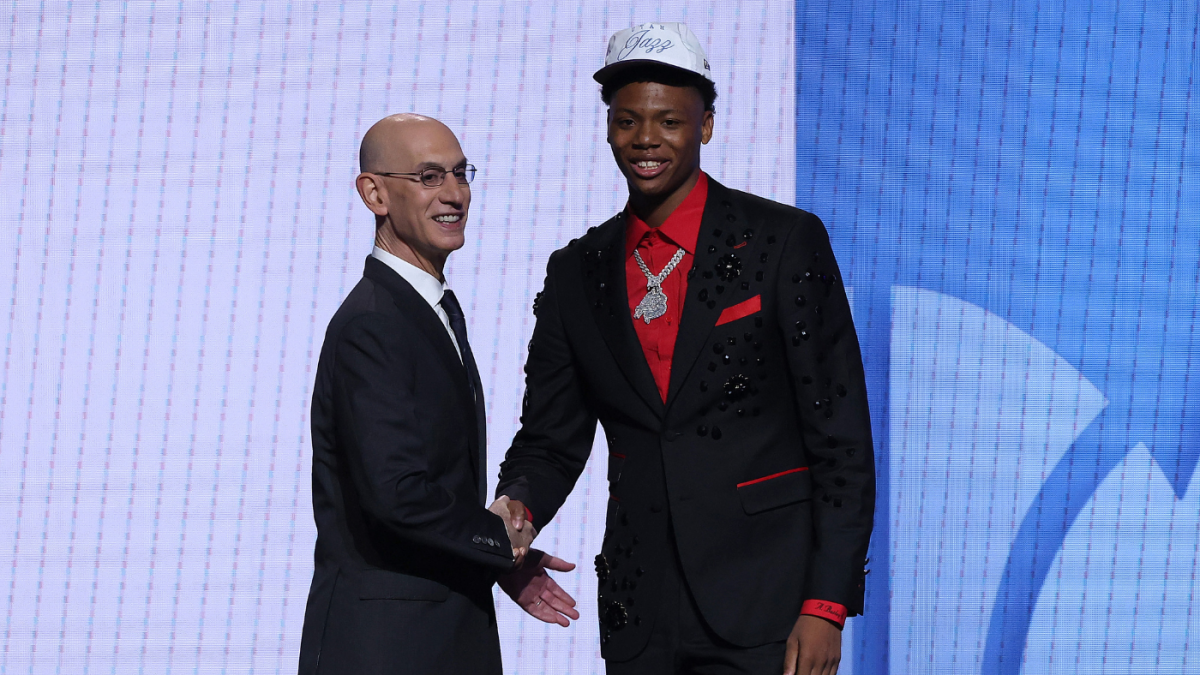The 2025 NBA Draft was a spectacle of anticipation, intrigue, and unexpected twists, none more captivating than the selection of Ace Bailey by the Utah Jazz with the fifth overall pick. Bailey, a consensus top-three talent out of Rutgers, had been the subject of intense speculation leading up to the draft, with reports suggesting he would refuse to report to any team outside the top three. When the Jazz defied expectations by selecting him at No. 5, it set the stage for a high-stakes showdown between player and franchise, one that could reshape the dynamics of future drafts.
Ace Bailey’s rise to NBA stardom was never in question. His athleticism, length, and scoring ability made him a coveted prospect, with scouts praising his fluid perimeter skills, relentless defensive motor, and playmaking flair. However, as the draft approached, Bailey’s public image became entangled in a web of rumors and defiance. Reports indicated that his camp, led by agent Omar Cooper, had informed at least one top-five team that Bailey would not report if selected. The exact motivations behind this stance remained unclear, but speculation ran rampant. Was this a strategic move to secure a preferred destination, or a calculated effort to avoid what Bailey’s team perceived as unfavorable situations? The ambiguity only deepened the intrigue surrounding the draft.
The tension reached a boiling point on draft night. With Bailey seated in the green room, the air thick with anticipation, many expected him to be selected within the first three picks or to slide to a team he deemed more acceptable. Instead, the Utah Jazz, one of the teams reportedly cautioned by Bailey’s camp, called his name with the fifth pick. The decision was a bold statement from the Jazz, signaling their willingness to gamble on talent despite the potential fallout. For Utah, the opportunity to draft a top-three prospect at No. 5 was too enticing to pass up. The team, already rich in young talent, saw Bailey as a potential cornerstone for their future. However, the move also carried significant risk, as the Jazz would now have to navigate the delicate task of integrating a player who may have arrived reluctantly.
Bailey’s hardline approach to the draft process is not without precedent. Top prospects have long used pre-draft workouts, medical information, and agent posturing to exert influence over their first NBA stop. In some cases, these tactics have proven successful, such as Kobe Bryant’s maneuvering to join the Los Angeles Lakers or Eli Manning’s orchestrated exit from the San Diego Chargers in the 2004 NFL Draft. Bailey’s motivations, however, warrant closer examination. Market size, endorsement opportunities, and a clear path to contention may have played a role in his decision. Additionally, organizational stability, coaching acumen, and developmental track records are critical factors for players and their representatives. The Jazz, while not lacking in young talent, may not have met all of Bailey’s criteria, leading to his public defiance.
The NBA’s draft system has long been a contentious issue, balancing the league’s competitive integrity with player autonomy. The draft is one of the few areas in sports where athletes have minimal say in their initial destination, leading to occasional standoffs and holdouts. Recent years have seen players sit out seasons, decline medical examinations, or refuse to meet with certain teams. Some front offices have acquiesced to these demands, while others have drafted undeterred, betting on time and professionalism to resolve any disputes. The rarity of players actually refusing to report has not diminished the impact of such threats, as teams often prefer to avoid the uncertainty and potential fallout.
The potential outcomes of Bailey’s situation are multifaceted. If he reports to the Jazz, he will have the opportunity to prove his worth as one of the most talented players in the draft class. Utah’s infrastructure has a proven track record of developing young talent, and Bailey could thrive under the right circumstances. However, lingering resentment or a rocky start could derail his integration, affecting team chemistry and long-term success. Alternatively, Bailey may choose to hold out or request a trade, a move that could lead to a protracted standoff. The Jazz would likely attempt to trade him, but doing so from a position of weakness could result in an unfavorable deal. In extreme cases, the NBA may intervene, potentially leading to rule changes or policy discussions aimed at addressing the growing tension between player autonomy and draft positioning.
The implications of Bailey’s draft-day drama extend beyond his immediate future with the Jazz. His actions have raised the stakes for player representation and future drafts. As agents become more assertive, the power dynamic between teams and player camps may shift, leading to more high-stakes negotiations. If Bailey successfully secures a move to a preferred destination, other prospects may follow suit, further complicating the draft process. Conversely, if his stance backfires, it could serve as a cautionary tale for future players, reinforcing the risks of defiance.
The Utah Jazz have made a bold bet on Ace Bailey, prioritizing talent over potential tension. The success of this gamble hinges on Bailey’s next steps and the Jazz’s ability to integrate him into their roster. For now, the spotlight is on Salt Lake City, where history will judge whether this high-risk move pays off. The NBA draft is a complex interplay of talent, strategy, and human dynamics, and Bailey’s story is a testament to its enduring unpredictability. As the league watches, the Jazz and Bailey stand at a crossroads, their futures intertwined in a narrative that could redefine the balance of power in professional sports.

